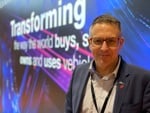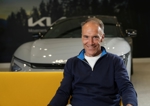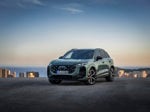PSA Peugeot Citroen has signed deals with France's National Scientific Research Centre and the French Atomic Energy Commission to bring the zero-emissions holy grail a step closer - and has identified van fleets as being at the forefront of fuel cell development.
Several hundred researchers will work to develop pollution control for clean, inexpensive engines, lighter structures and materials recycling, as well as new electrode materials and high capacity batteries.
Jean-Martin Folz, chairman of PSA Peugeot Citroen, said: 'In the future there is a legitimate place for electric vehicles on delivery fleets and the growth of e-commerce will see an increase in deliveries.'
Addressing delegates at the manufacturer's Alternative Energy conference in Paris, Folz said: 'This company believes in the progressive development of fuel cell technology for cars. In the short-term it will be used for fleet vehicles in urban areas.'
Between 1997 and 2000, PSA Peugeot Citroen invested more than FF4 billion (650 million Euros) in renewing its range of gasoline and diesel engines to reduce fuel consumption.
The group's alternative fuel strategy will lead it to the development of three alternative energy technologies including LPG, biofuels, and electric vehicles such as battery-powered, hybrid and fuel cell.
Pascal Henault, vice-president, automotive, research and innovation with PSA Peugeot Citroen, admitted that fuel cell technology was not yet cost effective for high-mileage fleets.
He added: 'A number of major difficulties remain to be overcome, concerning cost, integration, on-board storage and fuel distribution, but mid- to long-term prospects are good.'
PSA Peugeot Citroen has developed two new fuel cell vehicles - the Hydro-Gen demonstrator, based on a standard electric Peugeot Partner, and the Fuel Cell CAB that has a range of between 200km and 300km and is suited to urban use where energy is only consumed when a vehicle moves.
Fuel cell engines use controlled quantities of hydrogen and oxygen for power. The hydrogen is stored on-board the vehicle in pressurised tanks and passed on to a fuel cell - effectively a stack of metal plates acting as a catalyst to trigger a reaction so the hydrogen combines with oxygen.
The reaction produces electricity, which is transferred from the cell through a battery to an electric motor that powers the vehicle.
The battery acts as a power buffer between the fuel cell, which supplies average power, and the drive system, which has to vary output to cope with driver demand.
Unlike a battery, the fuel cell does not have a very limited range and is only limited to the amount of hydrogen that can be stored on board. (July/August 2001)















Login to comment
Comments
No comments have been made yet.